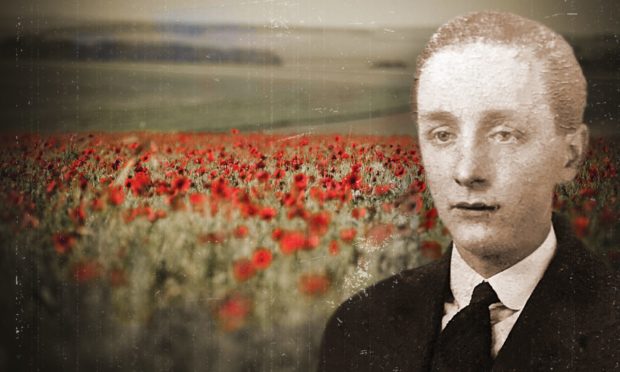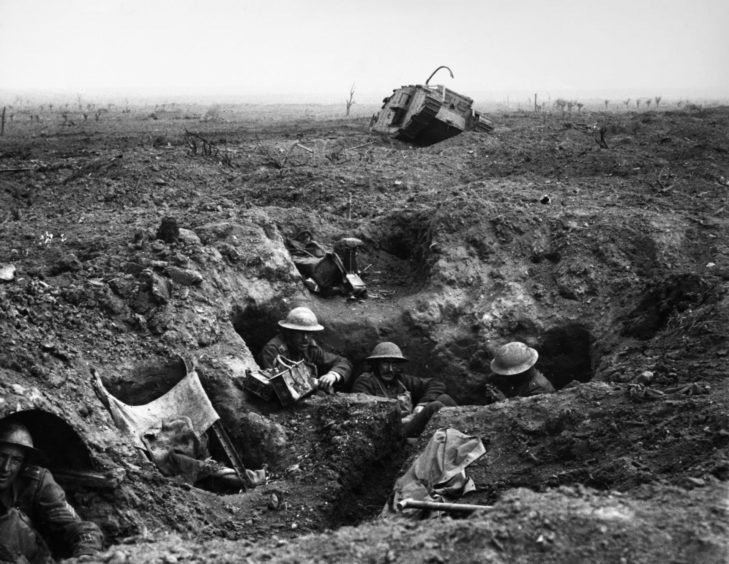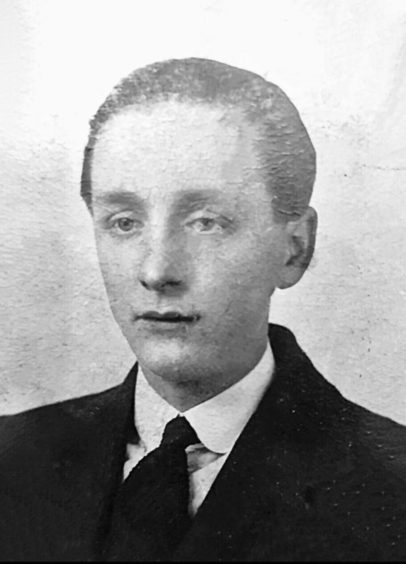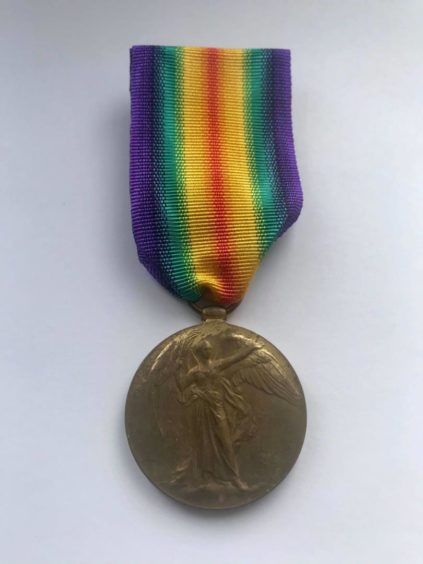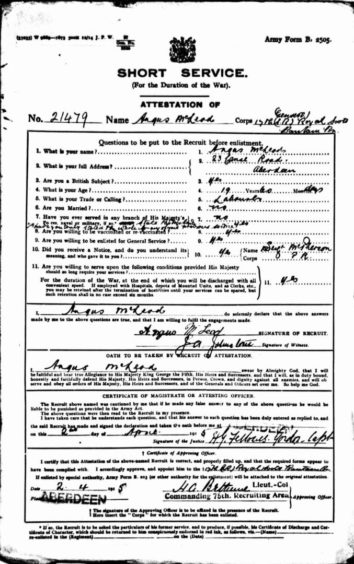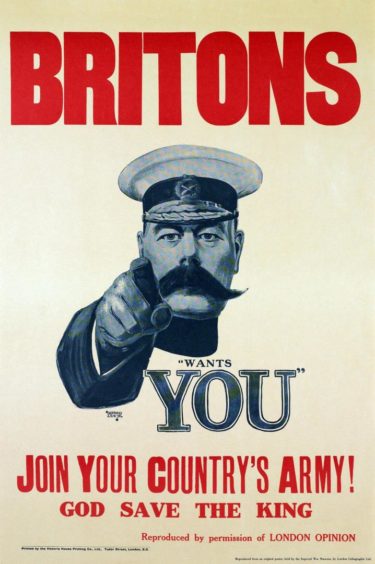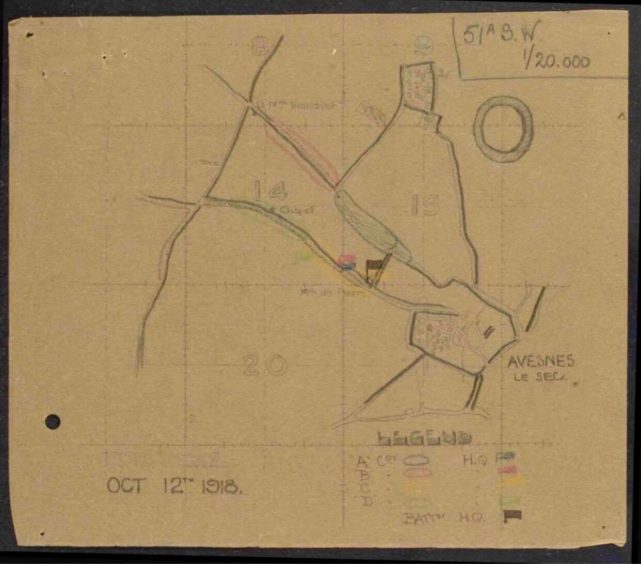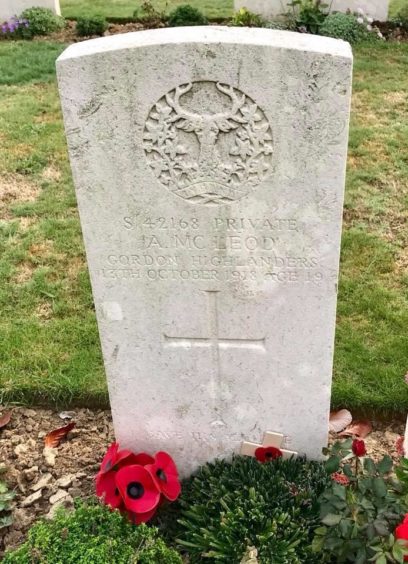This is the face of a tenacious Aberdeen teenager whose dream to follow his soldier father onto the First World War battlefields ended in tragedy.
Angus McLeod was killed just days after his 19th birthday, and sadly, only weeks before the Armistice was declared in 1918.
Desperate to emulate his dad Alexander’s military career as a proud Gordon Highlander, Angus first enlisted in 1915 aged 15.
But the schoolboy’s short-lived charade was exposed 27 days later, and he was quickly discharged.
Angus successfully enlisted for the fourth and final time as a Gordon Highlander on his 18th birthday – a decision that would cost him his life.
He would ultimately meet his father on the battlefield, but just two days later Angus was dead.
The youngster’s story of steely resolve was revealed 100 years after his death through research carried out by his great-nephew Ken McLeod.
And now, after dedicating years to piecing together Angus’ heart-wrenching tale, Ken has finally been able to put a face to the name on his documents.
First glimpse
Ken’s impressive research was able to pinpoint Angus’ final movements on the frontline in the days before his death, but finding a photograph of his late relative proved more challenging.
In 2018, Ken, who lives in Yorkshire, shared Angus’ story online to mark 100 years of the Armistice, hoping he might track down a photograph of his late relative in Aberdeen.
His research also took him and his wife Jeanette to The Gordon Highlanders Museum in Aberdeen where they received a personal tour of the collections.
But it was another two years before Ken finally laid eyes upon his great-uncle Angus after tracking down distant relatives he didn’t know existed.
Ken, 62, said: “Following the Evening Express article ‘The Boy Who Kept Enlisting’ published in November 2018, I discovered members of my own family that I didn’t even know existed in Aberdeen, around Scotland, and as far afield as the United States of America, which in itself has been excellent.
“I again started to put feelers out among my new-found family for a photograph of Angus. I had been told so often that nobody had seen one and that there probably wasn’t one in existence.”
Within hours, a relative made contact saying she thought her brother might have a photo.
Ken added: “I made contact and introduced myself to Robert Kilgour. It transpired that Robert was also a great-nephew of Angus and a distant relative I had not been aware of previously.
“I couldn’t believe my luck and waited in anticipation to hear his news. Robert did indeed have an original photograph of Angus.
“He kindly sent me a copy of that photograph, which finally put a face to one of our family’s war heroes after all this time searching.
“Discovering an image of the brave young man I had been investigating for years made his story come to life.”
Victory medal
And in an unexpected twist of fate, Ken was “dumbstruck” to be contacted out of the blue last month by a woman in Edinburgh.
Fiona Still believed she had found Angus’ Victory Medal among her late father’s collection of militaria.
The medals – issued to soldiers who saw active service – have a name, rank, service number and unit on them, making it possible to trace information about the recipient.
Having conducted a search online, the woman found the original article about Angus and contacted Ken – an email which he said “stopped him in his tracks”.
He added: “Mrs Still had recently lost her father and was in the process of sorting through his collection of militaria when she came across a First World War Victory Medal and carried out a Google search of the recipient.
“Mrs Still’s search revealed the very same newspaper article entitled ‘The Boy Who Kept Enlisting’ in the Aberdeen Evening Express.
“The medal belonged to S-42168 – Private A McLeod of the Gordons.
“It was confirmed as one of the medals awarded posthumously to Angus. I couldn’t believe it had been identified.”
Wishing for the medal to be back in the family, Mrs Still said it was an honour to pass the precious trophy on to Ken.
It is believed her father purchased it at an antiques shop in Edinburgh a number of years ago.
Ken has now been reunited with the poignant medal, more than 100 years after it would have been sent to the young soldier’s grieving parents at 23 Canal Road, Aberdeen.
A childhood in Aberdeen
Born on October 1 1899, Angus grew up in Aberdeen, with his parents Jane and Alexander, and nine siblings.
Impressionable Angus would have heard tales of his father’s time in the military in far-flung destinations, worlds away from his childhood home near factories.
Alexander served with the Gordon Highlanders in India and the West Indies, as well as seeing active service in the Boer War.
A proud military man, when the call came, Alexander answered and he went to the battlefields of France. His eldest son, also called Alexander, had enlisted too.
He could never have imagined the last time he’d see Angus would be face-to-face on the battlefield.
Keen to follow in his father’s footsteps, Angus first tried to join the 17th Royal Scots in April 1915, aged just 15 years and nine months, but claiming to be 19 years old.
A slight young man of only 5ft 2in, Angus’ first attempt to sign up lasted 27 days before he was exposed.
He tried again the following month and signed up with the 7th Battalion Gordon Highlanders.
At the time, recruiters only asked for an age, not a date of birth, and his spell as a schoolboy soldier lasted 127 days before he was discharged on September 30 1915.
Undeterred, he enlisted with the 3rd Gordon Highlanders in May 1916, aged 16 years and eight months, pretending to be 18.
He lasted 27 days before being discharged for a “misstatement as to age on enlistment”, which Ken suspects was down to an intervention from his parents.
Final Farewell
On his 18th birthday in 1917, Angus successfully enlisted with the 42nd Training Reserve Battalion Gordon Highlanders.
He had been working as a barman at the Grampian Bar in Torry before finally realising his dream.
After a period of training, he joined the famous 51st Highland Division, before being posted to France with the 1/6th Gordons as Private McLeod on May 11 1918 – exactly six months before the war ended.
But tragically, unlike his father, Angus’ military career would be over within five months as he was sent straight to the front line near Flanders.
Ken has painstakingly traced his great-uncle’s movements using the battalion’s original diaries, which also show a more ordinary side to life in the trenches.
Amid the warfare and shelling and the heart of the action by the Belgian border, the troops attended church services and played football against other battalions.
Angus’ obituary, published on November 1 1918 revealed that two days before his death, Angus met his father for the final time when his company advanced to the village of Avesnes-le-Sec in northern France.
By this time, his father was a sergeant with the Royal Scots Fusiliers Labour Corps.
It’s unclear whether this was a chance meeting, or arranged by Alexander knowing what horrors lay ahead.
‘Gave All His Life’
On October 13 1918, the battalion hoped to reach the shelter and safety of woodland, but came up against the Germans’ relentless machine gun fire.
The Seaforth and Gordon Highlanders suffered devastating losses, and Angus fell among them.
He never left Avesnes-le-Sec. His grave stands in a picturesque Commonwealth War Graves Commission Cemetery nearby inscribed with the epitaph chosen by his anguished parents: “Gave All His Life.”
Sgt Alexander McLeod and his son Alexander both survived the conflict, with the latter going on to become a Justice of the Peace and long-time supporter of the Royal British Legion.
But the young soldier’s memory has been kept alive, not only by Ken and his family, but in Avesnes-le-Sec.
Angus’ legacy
A local woman called Anne Dubois, who had a keen interest in the history of her village, organised an exhibition in November 1918 in memory of the battle fought there 100 years before.
After carrying out some research, she found Angus’ story online and made contact with Ken.
He said: “She became so moved by it that she and her husband visited his grave and laid flowers in his memory.
“I have kept in touch with Mrs Dubois, and she has asked if she could translate my story of Angus into French for the Avesnes-le-Sec village historical archives, something I am so pleased for her to do, and something Mrs Dubois says that she would be honoured to fulfil.
“I felt this was such a touching thing for total strangers to do; it re-energised me and my efforts to continue researching Angus’ past.”
The translation means the story of a young, headstrong lad who was so loved by his family then, and his descendants around the world now, will continue as his legacy where he fell in France.
Ken now hopes to track down Angus’ British War Medal, which would have been issued alongside the Victory Medal.
Ken added: “This medal will be inscribed with Angus’ details on the edge, similar to his Victory Medal. It must be out there somewhere.
“Once again I would be very interested in any information as to the whereabouts of this medal. I know it’s a long shot – but, we know it can be done.”
Anyone with information about the medal, or who wants to follow Ken’s research is invited to get in touch via his research page on Facebook.
